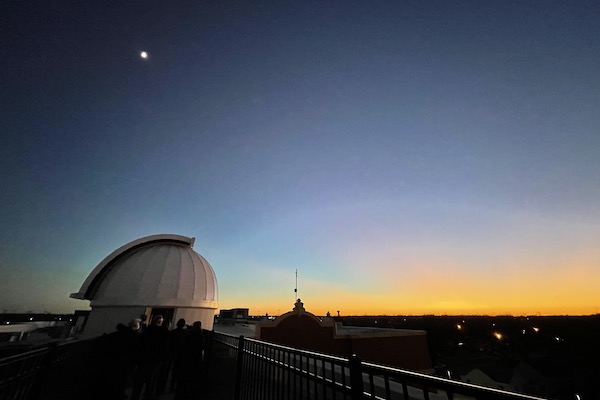ENID, OK - This year, there will be two eclipses of the sun and two eclipses of the moon -- and three of these will be visible for some in North America, according to The Old Farmer's Almanac.
A total eclipse of the moon will occur on May 26, best visible to those in western North America and Hawaii from 4:46 a.m. ET to 9:51 a.m. ET.
An annular eclipse of the sun will happen on June 10, visible in northern and northeastern North America from 4:12 a.m. ET to 9:11 a.m. ET. The sun won't be fully blocked by the moon, so be sure to wear eclipse glasses to safely view this event.
November 19 will see a partial eclipse of the moon, and skywatchers in North America and Hawaii can view it between 1 a.m. ET and 7:06 a.m. ET.
And the year ends with a total eclipse of the sun on December 4. It won't be seen in North America, but those in the Falkland Islands, the southern tip of Africa, Antarctica and southeastern Australia will be able to spot it.
Visible planets
Skywatchers will have multiple opportunities to spot the planets in our sky during certain mornings and evenings throughout 2021, according to the Farmer's Almanac planetary guide.
It's possible to see most of these with the naked eye, with the exception of distant Neptune, but binoculars or a telescope will provide the best view.
Mercury will look like a bright star in the morning sky from June 27 to July 16, and October 18 to November 1. It will shine in the night sky from May 3 to May 24, August 31 to September 21 and November 29 to December 31.
Venus, our closest neighbor in the solar system, will appear in the western sky at dusk on the evenings of May 24 to December 31. It's the second brightest object in our sky after the moon.
Mars makes its reddish appearance in the morning sky between November 24 and December 31 and will be visible in the evening sky between January 1 and August 22.
Jupiter, the largest planet in our solar system, is the third brightest object in our sky. It will be on display in the morning sky between February 17 and August 19. Look for it in the evenings of August 20 to December 31 -- but it will be at its brightest from August 8 to September 2.
Saturn's rings are only visible through a telescope, but the planet itself can still be seen with the naked eye on the mornings of February 10 to August 1 and the evenings of August 2 to December 31. It will be at its brightest between August 1 to 4.
Binoculars or a telescope will help you spot the greenish glow of Uranus on the mornings of May 16 to November 3 and the evenings of January 1 to April 12 and November 4 to December 31 -- but at its brightest between August 28 to December 31.
And our most distant neighbor in the solar system, Neptune will be visible through a telescope on the mornings of March 27 to September 13 and the evenings of September 14 to December 31. It will be at its brightest between July 19 and November 8.









Thanks for the great list, Curtis. I’ve been amazed how Venus was bright over the last week or so. I’ll make sure to catch the waxing crescent moon near Venus tonight.
Thanks! We were watching for the space station not long ago. Saw it once, which was fabulous! Looking forward to star gazing. Should have asked for a telescope for Christmas!